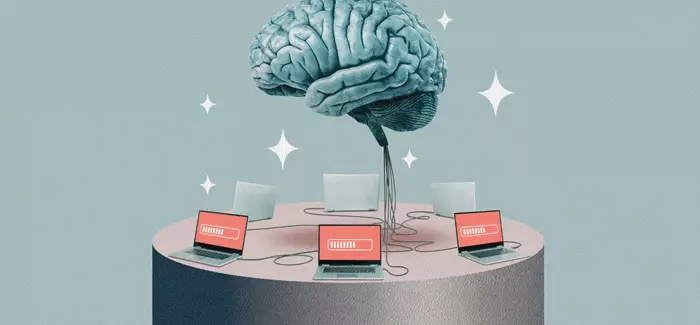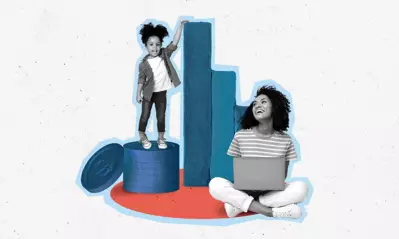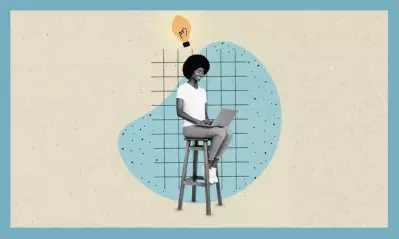How AI can help you close your skills gap

Written by Lorie A. Parch

If youãre worried that AI might replace your job ã or that your skills wonãt be enough for the future ã youãre not alone. According to ¿«Ñ°òÆóçãs 2025 Career Optimism IndexôÛ (COI) study, most workers feel burned out, uncertain and left behind.
But hereãs the good news: The same technology thatãs disrupting jobs may also be your best opportunity to grow, adapt and prepare for your future.
What is a skills gap?
A ãskills gapã refers to the space between what companies need and what the current workforce brings to the table.
Employers donãt like the skills gap because it impacts their companyãs productivity, competitive advantage and bottom line. The gap can also affect employersã decisions to hire from within or externally.
According to the COI, for instance, 60% of the 500 employers surveyed say they prefer to hire externally rather than train current employees in the skills their business needs. This, in spite of the fact that research shows how costly staff turnover can be, for example, and that the benefits of talent development to retention and profitability are clear.
Employees donãt like the skills gap either, because it threatens their jobs and their sense of satisfaction at work. As the COI reveals, giving workers opportunities to develop in their career can dramatically enhance motivation, engagement and adaptability.
No one, in other words, benefits from a skills gap, yet one exists ã and itãs growing. There are a couple of reasons for this, according to Leo Goncalves, the vice president of the Workforce Solutions Group at ¿«Ñ°òÆóç, which helps organizations connect employees to relevant learning opportunities. The reasons, he says, are:
- Job requirements are shifting quickly to keep up with technology.
- The rise of remote and hybrid work environments creates new demands among workers who recognize they have options.
- Automation is on the rise, and workers need to be able to function in those highly automated environments.
Yet Goncalves sees opportunity in the challenge. ãWorkers who can navigate new tools, interpret data and collaborate across virtual teams will have a big advantage, regardless of their industry,ã he says.
Skills businesses will need
According to Goncalves, most businesses will need people who have a solid foundation in what might be called tech literacy and data and analytics.
ãIn a world where so much data is being produced all the time, we need employees who are able to look at the data, analyze it and draw insights. This cuts across multiple industries,ã Goncalves says. A basic knowledge of AI and how it can drive productivity is now quickly emerging as a must-have skill, he adds.
While many of us will have to upskill, or learn new skills to keep up, other roles will require reskilling, or learning an entirely new group of competencies. The World Economic Forumãs found that 85% of employers surveyed said upskilling their workforce was a priority, and 70% expect to hire staff with new skills.
In addition to technology-forward knowledge, Goncalves says teamwork, collaboration, communication, creative problem-solving and leadership will be critical, too. These attributes, traditionally known as soft skills, are what Goncalves terms ãdurable power skills.ã
ãHow do you work in an environment where the team is spread throughout the country or the world, and you donãt see them? If youãre a leader, how do you lead a team thatãs operating remotely? Good communication and other skills like these are , though many companies struggle to develop them,ã Goncalves says.ô
Using AI to upskillô
While many people worry AI will make their jobs obsolete, the irony is that itãs precisely AI that can potentially help workers evolve and grow ã and find more satisfaction in their work.
ãThe reality is that most employers donãt have insight into what their employees are capable of,ã Goncalves notes.
Artificial intelligence, however, can analyze skills gaps and performance for each employee and then generate training materials and a personalized learning path customized to that personãs needs, aptitudes and learning style. AI, in other words, can help with upskilling.
ãIt can also infer things based on the behavior demonstrated in those unstructured datasets,ã Goncalves continues. ãIt can identify skills and proficiency, and from there, it can recommend the best next action.ã
Such action, he adds, can take various forms. Depending on the tool, the person and the employer objective, AI might:
- Help a worker discover what theyãre already good at (even if their resumûˋ doesnãt yet show it)
- Pinpoint the skills an employee needs to develop to reach their next goal
- Provide personalized learning plans that save an individual time so they can focus on what matters
Tech with benefits
Probably no one will be sorry to see one-size-fits-all training disappear, especially if customized learning also encourages employers to hire and promote internally to fill roles.
ãTraditionally, managers consider people only for one functional area, but AI can help unearth transferable skills that could be very valuable for another role,ã explains Goncalves. ãThe outcome for the company [could then become] that theyãre truly hiring internally and retaining more employees while effectively closing the skills gap.ã
Companies are likely to get an enthusiastic reception from their staff if they present more and better upskilling or reskilling opportunities. According to the COI, 86% of workers say they are actively seeking chances to develop their skills, and career-development options are directly linked to restoring workersã sense of control over their career trajectory. Nearly 90% of employees with learning opportunities feel they have autonomy at their current job, and nearly as many say they feel in control of their professional future.
The numbers were far lower for those who worked somewhere without the chance to get more training. For these workers, says Goncalves, ãif they want to grow, the only option they have is to go find a job somewhere else.ã
That ãtalent leakage,ã as Goncalves calls it, can be stopped, or at least reduced, by giving a feeling of control back to employees ã something AI can help with. With the right tools, employees can gain clarity on which of their skills relate to their current job or another position in the company.
Goncalves explains: ãIt allows agency for the employee to own conversations with their manager. They can proactively approach their manager to say, ãGive me a shot at this special project,ã or ãLet me lead this project where I can show my leadership and communication skills with my peers.ã Then AI recommends a learning path or a skills development plan and that becomes the GPS for that individual to navigate all the learning they would otherwise have to figure out themselves.ã
When you understand how your existing skills connect to emerging jobs ã and you know exactly what to learn next ã you take control of your future. AI can make that path clearer, faster and more personalized.
AI, in other words, isnãt just part of the future. It can be a pathway to preparing for it.
Learn more about the 2025 Career Optimism IndexôÛ study.
Education to sidestep the skills gap
The skills gap may be growing, but the path to closing it starts with you. ¿«Ñ°òÆóç offers more than 100 degree and certificate options to prepare students for a variety of career paths. Explore the following:
- Degree programs at the bachelorãs, masterãs and doctoral levels in such areas as business, IT, education and healthcare
- Certificate programs to develop career-relevant skills in as little as nine months
- Professional development programs in artificial intelligence, leadership, HR and more

ABOUT THE AUTHOR
Lorie A. Parch is a long-time journalist, editor and content strategist based in Chandler, Arizona. She primarily covers higher education, technology, public safety and lifestyle topics, and for four years led digital content strategy at the California State University Office of the Chancellor. A former Knight Journalism Fellow at the CDC and a National Magazine Award-nominated writer, Lorie's work now focuses on strategic communications and marketing. When she's not buried in a book, she loves traveling, painting and ceramics.
This article has been vetted by ¿«Ñ°òÆóç's editorial advisory committee.ô
Read more about our editorial process.
Read more articles like this:


